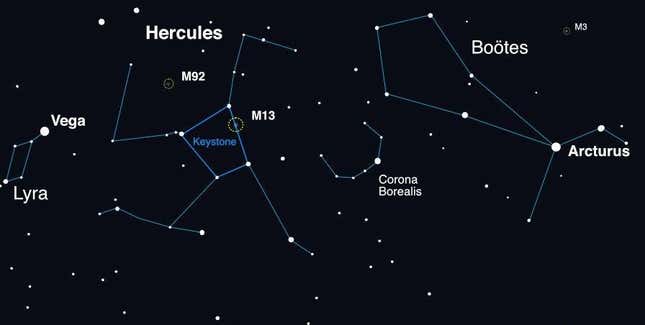[ad_1]
T Corona Borealis, a binary star system located 3,000 light-years from Earth, is a time bomb waiting to explode. If the recurring nova follows its usual pattern, we can expect to see a new, albeit temporary, star appear in the night sky any day now.
“T CrB remains our highest priority goal every night,” the director of a group of citizen scientists I belong to recently asserted. His urgency is understandable. Our “Cosmic Disasters” group should be on the lookout for the expected nova, collecting data before, during and after the explosion. It can appear at any moment, giving astronomers, whether amateur or professional, the opportunity to watch and study a rare and amazing event as it happens in real time.
The data collected from this event is set to improve our understanding of binary star system dynamics and the complex life cycle of stars. Really amazing. But what's also cool is that the nova is expected to be exceptionally bright. In fact, it's so bright that it will be visible to the naked eye and appear as a new star in the sky, at least for a few days.
Once it becomes visible, and if you have the chance to see it, you can claim to have witnessed a runaway thermonuclear reaction from 3,000 light-years away. Adding this to my recent naked-eye achievements is the plan – the latest of which occurred during the total solar eclipse on April 8. Like millions of others, I spotted evidence, They appear as bright red dotsduring kidney.
The T Coronae Borealis (T CrB), also known as the Blaze Star, last exploded in 1946, and it occurs at intervals of approximately 79 years. The current window opened last February and will continue through the spring and summer. T CrB, is one of five known recurring novae in the Milky Way Galaxy, a binary star system consisting of a heavy white dwarf and a red giant. Separated by just 0.54 AU, roughly the same distance from the Sun to Venus, their close collision turned T CrB into a ticking time bomb.
White dwarfs are the final stages of medium-sized stars, but this particular white dwarf, which has a mass of about 1.37 times the mass of our Sun, Racing towards the Chandrasekhar limit– An astronomical limit of about 1.4 solar masses, beyond which white dwarfs become unstable.
The red giant, which has a mass of about 1.12 times the mass of our Sun, orbits the white dwarf every 227 days, putting it within its range. Roche cloveThis is the boundary at which its material begins to spill onto its nearby companion. This process forms an accretion disk around the white dwarf, which is a vortex of stellar material.
When enough hydrogen from the red giant accumulates on the surface of the white dwarf, it heats to extreme temperatures. This extreme heat It provokes a runaway thermonuclear reactionTransforming the accumulated hydrogen into a cosmic fireworks display known as a nova. In the case of T CrB, this explosive event occurs once every 79 years or so. that…He looks at the clock…..Right now.

At +10 strength, T Coronae Borealis is currently invisible to the naked eye. However, the impending explosion will raise the star system to +2 magnitude, a brightness similar to Polaris, also known as the North Star. The system, visible to observers in the Northern Hemisphere, is located in the constellation Corona Borealis. This constellation forms an arc shape, and once seen, T CrB will temporarily appear in this part of the night sky.
In the days and weeks following its expected eruption, T CrB will gradually dim, returning to its lower brightness level. It will remain visible with the naked eye for several days after the explosion, and through telescopes and binoculars for a little over a week. After this period, the star system will return to its quiescent phase. Rinse, repeat, and it will explode again, likely in 2103. As for the supernova expected sometime this year, I will heed our director's advice, and make that my priority goal.
more: Astronomers are watching in real time as an epic supernova potentially gives birth to a black hole
[ad_2]
Source

